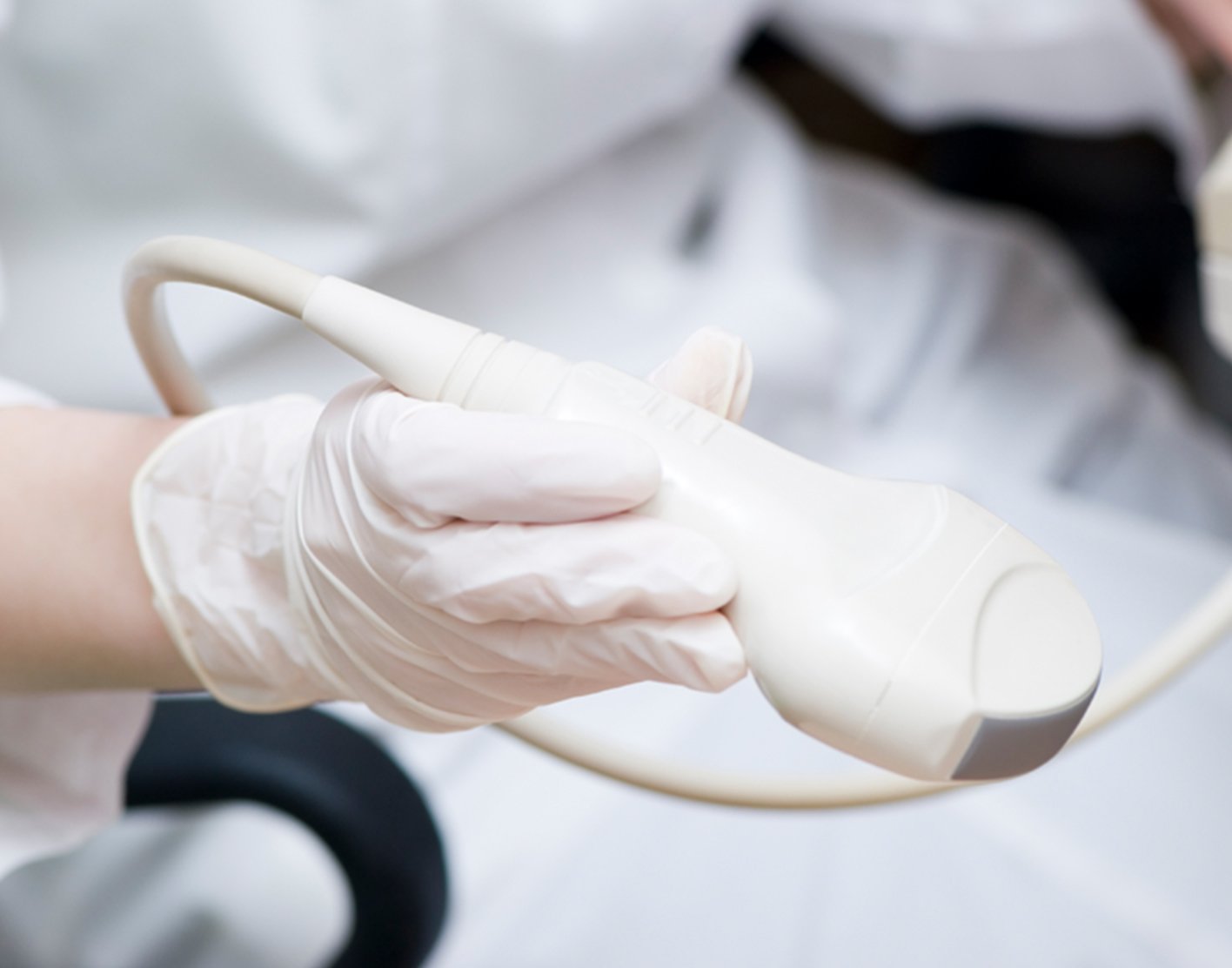
Breast ultrasound
Definition
Breast ultrasound is a test that uses sound waves to examine the breasts.
Alternative Names
Ultrasonography of the breast; Sonogram of the breast; Breast lump - ultrasound
How the Test is Performed
You will be asked to undress from the waist up. You will be given a gown to wear.
During the test, you will lie on your back on an examining table.
Your health care provider will place a gel on the skin of your breast. A handheld device, called a transducer, is moved over the breast area. You may be asked to raise your arms above your head and turn to the left or right.
The device sends sound waves to the breast tissue. The sound waves help create a picture that can be seen on a computer screen on the ultrasound machine.
The number of people involved in the test will be limited to protect your privacy.
How to Prepare for the Test
You may want to wear a two-piece outfit, so you do not have to completely undress.
A mammogram may be needed either before or after the exam. Do not use any lotion or powder on your breasts on the day of the exam. Do not use deodorant under your arms. Remove any jewelry from your neck and chest area.
How the Test will Feel
This test usually does not cause any discomfort, although the gel may feel cool.
Why the Test is Performed
Breast ultrasound is usually ordered when more information is needed after other tests are done or as a stand-alone test. These tests may include
Your provider may order this test if you have:
- A
breast lump found during a breast exam - An abnormal mammogram
- Clear or bloody
nipple discharge
A breast ultrasound can:
- Help tell the difference between a solid mass or a
cyst - Help look for a growth if you have clear or bloody fluid coming from your nipple
- Guide a needle during a
breast biopsy
Normal Results
A normal result means the breast tissue appears normal.
What Abnormal Results Mean
Ultrasound can help show noncancerous growths such as:
- Cysts, which are fluid-filled sacs
Fibroadenomas , which are noncancerous solid growths- Lipomas, which are noncancerous fatty lumps that can occur anywhere in the body, including the breasts
Follow-up tests to determine whether treatment may be needed include:
- Open (surgical or excisional) breast biopsy
Stereotactic breast biopsy (needle biopsy performed using a machine like a mammogram)Ultrasound-guided breast biopsy (needle biopsy performed using ultrasound)
Risks
There are no risks associated with breast ultrasound. There is no radiation exposure.
References
American Cancer Society website. American Cancer Society recommendations for the early detection of breast cancer.
James JJ, Evans AJ. The breast. In: Adam A, Dixon AK, Gillard JH, Schaefer-Prokop CM, eds. Grainger & Allison's Diagnostic Radiology. 7th ed. Philadelphia, PA: Elsevier; 2021:chap 63.
National Cancer Institute website. Breast cancer screening (PDQ) - health professional version.
Phillips J. The breast. In: Rumack CM, Levine D, eds. Diagnostic Ultrasound. 6th ed. Philadelphia, PA: Elsevier; 2024:chap 19.
US Preventive Services Task Force; Nicholson WK, Silverstein M, Wong JB, Barry MJ, Chelmow D, Coker TR, Davis EM, Jaén CR, Krousel-Wood M, Lee S, Li L, Mangione CM, Rao G, Ruiz JM, Stevermer JJ, Tsevat J, Underwood SM, Wiehe S. Screening for breast cancer: US Preventive Services Task Force Recommendation Statement. JAMA. 2024 Apr 30. Epub ahead of print. PMID: 38687503.
Review Date: 01/04/2023
The information provided herein should not be used during any medical emergency or for the diagnosis or treatment of any medical condition. A licensed physician should be consulted for diagnosis and treatment of any and all medical conditions. Call 911 for all medical emergencies. Links to other sites are provided for information only -- they do not constitute endorsements of those other sites. Copyright ©2019 A.D.A.M., Inc., as modified by University of California San Francisco. Any duplication or distribution of the information contained herein is strictly prohibited.
Information developed by A.D.A.M., Inc. regarding tests and test results may not directly correspond with information provided by UCSF Health. Please discuss with your doctor any questions or concerns you may have.



























